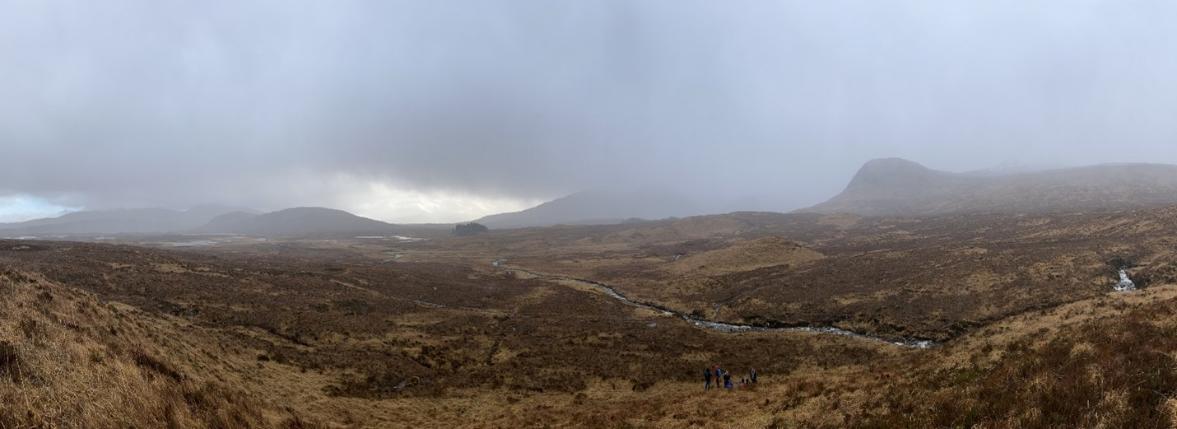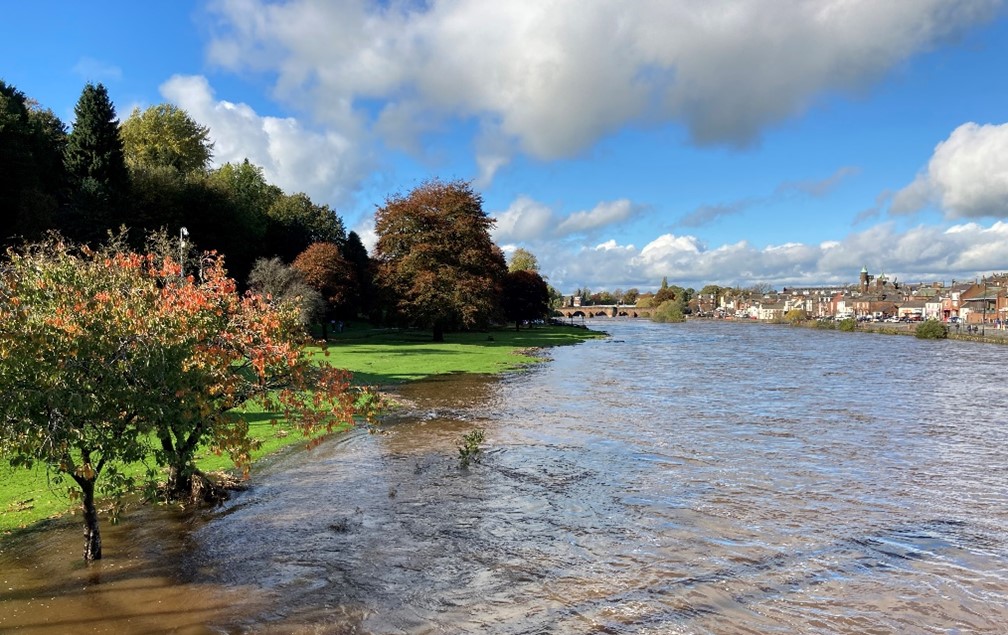Reviving Scotland's Peatlands: A Nature-Based Solution for Climate Resilience and Hazard Mitigation
Published: 12 October 2023
Amidst Scotland's captivating landscapes, peatlands take centre stage. NCR researcher Jiren Xu, a Lecturer specializing in Remote Sensing & GIS at the University of Glasgow's School of Social & Environmental Sustainability, introduces his latest project. This initiative explores the potential of these 'nature-based solutions' in securing Scotland's future in the face of an ever-changing climate.
In the scenic landscapes of Scotland, one feature has always intrigued me: peatlands. My journey into the depths of this ecosystem began during my PhD time in 2015 at the University of Leeds. Representing 20% of Scotland's land, they silently narrate tales of climate, biodiversity, and human history. Despite their significance, a staggering 80% of Scotland’s peatlands are degraded, emitting greenhouse gases, and increasing the flooding risk. Peatland restoration (PR), considered a “nature-based solution (NBS)”, has been prioritised by the Scottish Government. The Scottish Government has a target to restore 250,000 hectares by 2030, and in 2020 committed an additional £250m in funds for this work. However, there's a dearth of scientific evidence on how to implement peatland restorations effectively, their contributions to Scotland's broader climate change mitigation strategies, and their role in mitigating cascading hazards. Key questions remain unanswered, including the anthropogenic drivers of change and the tipping points in ecosystem functions related to hazard mitigation in Scottish peatlands, and how these functions will change under future climate change and restoration strategies scenarios.
 Image 1: Water drains from upstream peatland water sources to Loch Rannoch, Scotland ©Jiren Xu, Feb 2023
Image 1: Water drains from upstream peatland water sources to Loch Rannoch, Scotland ©Jiren Xu, Feb 2023
On moving to Dumfries and joining the University of Glasgow, I observed that Dumfries, positioned downstream of the River Nith Catchment (RNC), often faces flooding issues. The upstream peatlands, covering 23% of the RNC, are crucial for carbon capture, drinking water, and biodiversity, but like many of Scotland’s catchments, are largely degraded due to harmful activities.
I believe the RNC is a perfect pilot area to explore how peatlands can be utilized to mitigate cascading hazards in Scotland amidst our climate crisis, offering a blueprint for broader application across Scotland if successful. Thus, the project "Assessing Peatlands as Nature-Based Solutions for Mitigating Cascading Hazards in Scotland" was conceived. Using the RNC as a model, this initiative aims to delve into peatland functions, human-induced changes, and the potential of restoration strategies amidst future climate scenarios. Kickstarted in July 2023 with support from the National Centre for Resilience, and so far, our journey has been enlightening. By delving into a meta-analysis of existing literature, we're attempting to understand the relationship between water table depths, greenhouse gas emissions, and hydrological response in Scottish peatlands. Employing hydrological and carbon models, we will be estimating the peak discharge and carbon reserves of the RNC under future climate change and peatland restoration strategies. Our use of satellite imagery and Geographic Information Systems will also provide early promising insights, underscoring the diverse benefits of peatland restoration.
 Image 2: Downstream of River Nith across the town center of Dumfries ©Jiren Xu
Image 2: Downstream of River Nith across the town center of Dumfries ©Jiren Xu
 Image 4: Flooding downstream of River Nith across Dumfries on 30 October 2021. ©Jiren Xu
Image 4: Flooding downstream of River Nith across Dumfries on 30 October 2021. ©Jiren Xu
As our research progresses, the potential implications are thrilling. Our discoveries will not only resonate within academic domains but will also contribute to global initiatives like the Global Peatland Initiative. Although a detailed report and academic paper are forthcoming, we're optimistic that our work will spark discussions, inspire new strategies, and strengthen resilience efforts both in Scotland and globally.
First published: 12 October 2023
<< News

